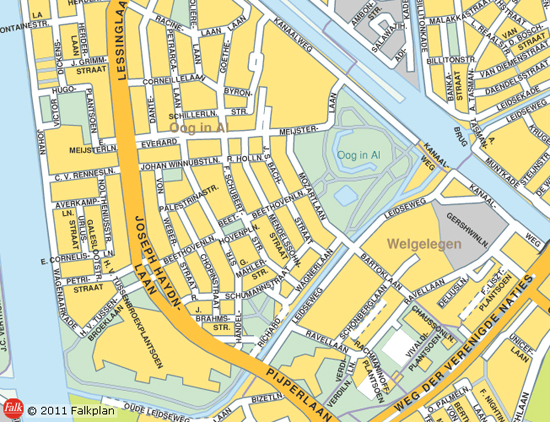In the development of street names in towns and cities those
in charge of naming try to effectuate the following:
- Optimal differentiation between different names,
so that no confusion occurs when someone states his home address.
Sunda, Sumba and Sumbawa are three Indonesian toponyms that
are often used in the Netherlands (the former colonial power
in Indonesia) for street names, but never in the same town,
as it would be difficult for Dutch ears to distinguish between
them.
For instance: The Fire Brigade logged a fire alarm erroneously
as occurring in the Van Durenstreet instead of the Van Burenstreet;
by the time they had arrived from the first at the correct second
address, the building already was damaged beyond repair.
- Preferably when hearing a street name, the
public should be able to write it correctly, so there should
not be big discrepancies between spelling and pronunciation.
- Preferably, when hearing a street name the
inhabitants of the same town or city should have a general idea
of the neighbourhood where that street is located. This can
be realised by assigning street names in clusters of the same
type: clusters of streets named after different flowers, different
tree species, after painters or composers, statesmen or resistance
fighters, rivers or world cities, etc. By being familiar with
the general location of each of these clusters of streets named
after a specific type of object, navigation within a town or
city will be improved.

Streets named after componists in
Utrecht, the Netherlands
On the above map one may discern
clusters of streets named for authors/poets: (Dante, Petraca,
Schiller,Byron, Goethe, Racine, La Fontaine, Grimm, Victor
Hugo, Dickens), composers (Bela Bartok, Vivaldi, Liszt, Ravel,
Verdi, Schonberg, Delius, Mozart, Bach, Mendelssohn, Schumann,
Händel, Mahler, Chopin, Von Weber, Joseph Haydn, Palestrina,
Johan Winnubst), and with Indonesian toponyms (Malakka, Billiton,
Banka) and Dutch empire builders (L.Reaal, Van Diemen, Daendels,
Abel Tasman, Van den Bosch)).
|
